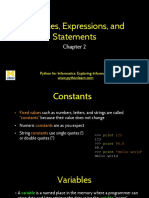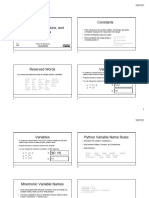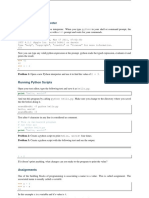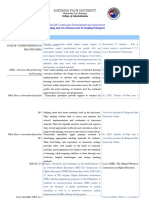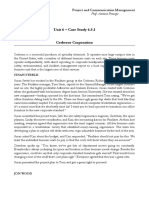0% found this document useful (0 votes)
18 views28 pagesLecture 2
The document provides an introduction to algorithms and programming, focusing on Python as a programming language. It covers key concepts such as variables, data types, operators, and input/output functions. Additionally, it highlights the importance of variable declaration, assignment, and the distinction between different programming languages' syntax.
Uploaded by
koosmokoele85Copyright
© © All Rights Reserved
We take content rights seriously. If you suspect this is your content, claim it here.
Available Formats
Download as PDF, TXT or read online on Scribd
0% found this document useful (0 votes)
18 views28 pagesLecture 2
The document provides an introduction to algorithms and programming, focusing on Python as a programming language. It covers key concepts such as variables, data types, operators, and input/output functions. Additionally, it highlights the importance of variable declaration, assignment, and the distinction between different programming languages' syntax.
Uploaded by
koosmokoele85Copyright
© © All Rights Reserved
We take content rights seriously. If you suspect this is your content, claim it here.
Available Formats
Download as PDF, TXT or read online on Scribd
/ 28






